Standard and Stand-Off Raman Probes
About our Raman Probes
Standard and Stand-off Raman Probes
When a sample is large, in a hazardous or high-temperature environment, or for any reason, difficult to bring to a spectrometer, a probe provides the ideal solution for getting real-time observations.
As with Raman spectrometers, a Raman probe is used to measure the inelastic scattering of light from a sample. Raman scattering is produced when the energy levels of photons are shifted up or down as a result of excitation by a monochromatic source (usually a laser). The change in vibrational frequency is used to determine the composition of a target substance.
A Raman probe focuses the laser on the sample, collects the scattered light and feeds it back to the spectrometer.
Our Raman probes are ideally suited for coupling with our range of high etendue HES spectrometers. We currently offer two probes: the Standard Raman Probe for close or contact measurements, or the Stand-Off Raman Probe, capable of making measurements from a distance of up to 3 metres.
Product Specifications

RP1000 Raman Probe for Stand-Off Measurements
Our Stand-Off Raman probe can make measurements from distances of up to 3 meters from the target.
Our Stand-Off Raman Probes are fitted with the highest quality optical filters to suppress any unwanted laser and have focal lengths from 50 mm up to 3 m.
These probes are designed to work seamlessly with the ISI range of HES spectrometers with etendue characteristics to match and designed to minimise unwanted background light. This allows for maximum light collection even at distance. Our Stand-Off Raman probe can be fitted to a robotic arm for deployment by ROV, ideal for remote sensing in hazardous environments.
Our Raman probe is currently being used in the nuclear decommissioning sector to remove the human element from the detection of substances in gloveboxes.
Front Panel Features:
- Continuous frame and single frame capture options
- FVB/2D modes
- Image, FFT and spectrum display options
- Frame averaging
- Peak Labelling
- Dark image subtraction
- Spectra overlay function
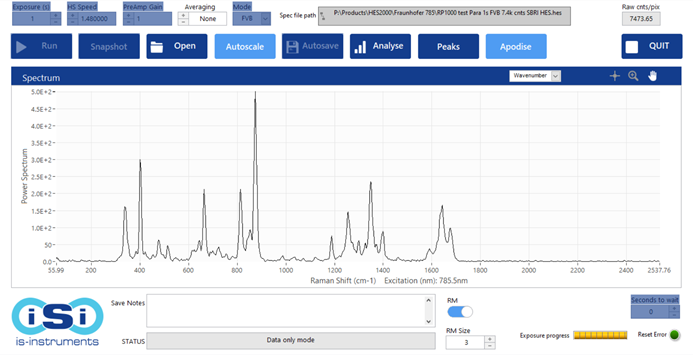
Spectra shown was captured in 1s using a HES2000 Raman spectrometer coupled to an RP1000 Raman probe via a 0.22NA 910 µm optical fibre. A 105 µm fibre coupled PDLD 500mW 785nm laser was used to excite the target paracetamol tablet sample.
Stand-Off Raman Probe Specification
The specifications given below are for the standard RP1000, but the unit is customisable to operate between 500 mm and 1500 mm standoff distances and may be adapted to operate at alternative Raman excitation wavelengths.
| Feature | Detail |
|---|---|
| Raman operating λ | 785 nm |
| Configuration | Mirrored obscuration and lens combination confocal |
| Standoff distance (from 100mm diameter window) | 1000 mm |
| Laser fibre connection | FC/PC |
| Spectrometer fibre connection | SMA |
| Dimensions | L: 360mm (inc. fibre gland) Max W: 140mm |
| Mass | ~ 1.8 kg |
The fibre coupled RP1000 Raman probe is designed to operate with the HES2000 spatial heterodyne Raman spectrometer. Operating at a 1000 mm standoff distance from the 100mm diameter window, the probe will facilitate non-destructive interrogation of target samples to capture material-specific Raman spectra.
Applications include:
- Quality control during steelmaking processes
- Composition monitoring in Ceramics
- Identification of liquids in pressurised gas pipelines
- Identification of multiple gas species in gas pipelines
- Deployment in nuclear environments
Product Specifications
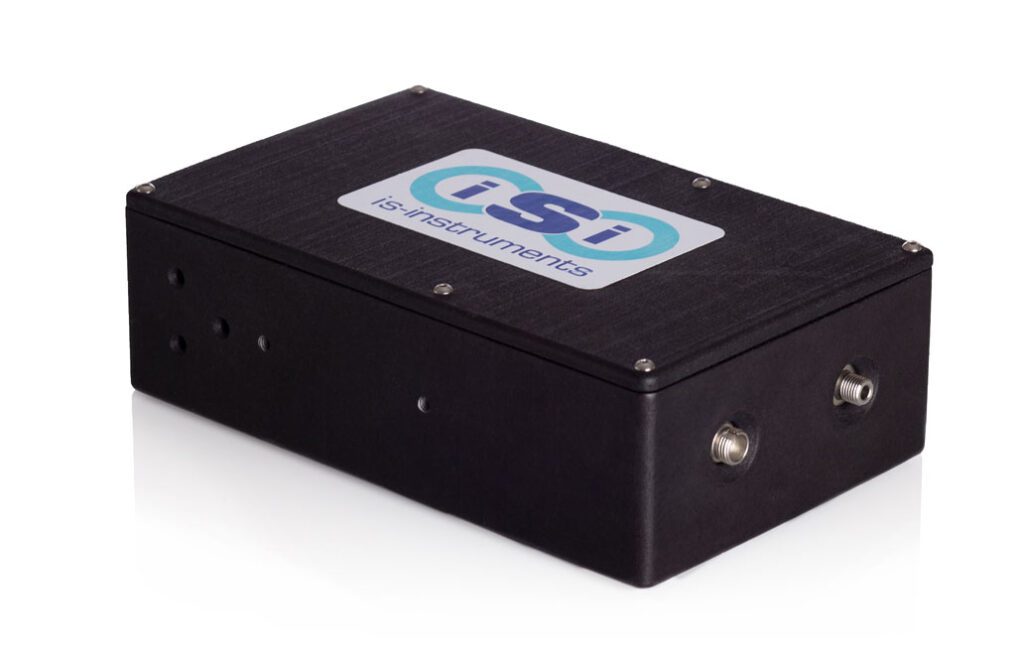
Standard Raman Probe
The fibre-coupled RP50 Raman probe is designed to operate with the HES2000 spatial heterodyne spectrometer.
Operating at a 25mm standoff distance from the enclosure aperture, the probe will facilitate non-destruction interrogation of target samples to capture material-specific Raman spectra.
The specifications given are for the standard RP50. Please get in touch for further details or customisation options including alternative Raman excitation operating wavelengths.
RP50 – Standard Raman Probe
| Feature | Detail |
|---|---|
| Raman operating λ | 785 nm |
| Configuration | Dichroic mirror-based confocal |
| Standoff distance
(from enclosure aperture) |
25 mm |
| Laser fibre connection | FC/PC |
| Spectrometer fibre connection | SMA |
| Dimensions | 160 x 100 x 50 mm |
| Mass | < 500g |
Front Panel Features:
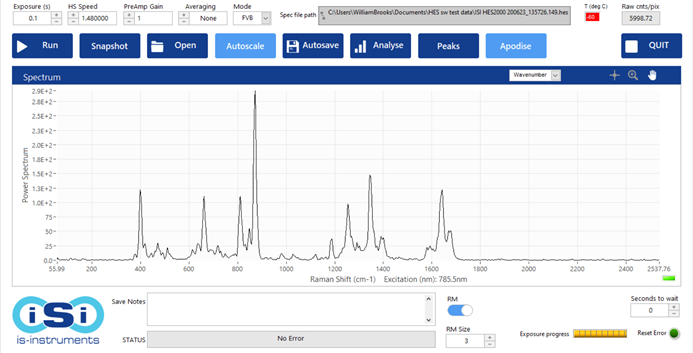
- Continuous frame and single frame capture options
- FVB/2D modes
- Image, FFT and spectrum display options
- Frame averaging
- Peak Labelling
- Dark image subtraction
- Spectra overlay function
Product Specifications

Suction Cup Raman Probe
IS-Instruments has developed a prototype Raman probe designed to measure samples through windows and other optical mediums that would typically obscure spectroscopic measurements.
The probe uses a biaxial design to minimise unwanted background signal and uses suction cups to securely mount the system.
Development started for this as part of an Innovate project looking at developing freeze-drying technology for pharmaceuticals and medicines. Various spectroscopic techniques were added into a freeze-dryer to allow freeze-drying runs to be monitored and measured over time. This prototype through-window Raman probe uses these same ideas but is intended to be easily retrofitted to existing freeze-dryers using the suction cup mounting design.
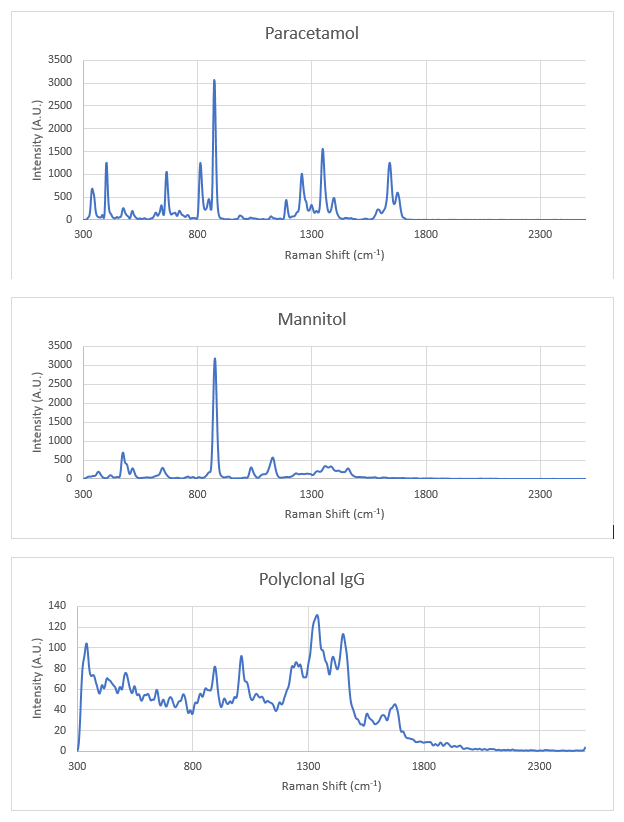
Suction Cup Raman Probe
Why it’s so clever
The high throughput of our HES2000 spectrometer makes it well suited to stand-off measurements, and this probe design leverages this to measure samples through obscuring optical mediums like thick acrylic or thick glass windows, which traditional Czerny-Turner based Raman spectrometers often struggle to do.
Initial testing has demonstrated the ability to capture Raman spectra even through acrylic windows 25mm thick. This was possible even with relatively weak Raman spectra, like that of IgG. Shown below are Raman spectra of paracetamol, mannitol, and polyclonal IgG. All Raman spectra were captured through a 25mm acrylic window as well as a glass vial (see below).
The use of Principal Component Analysis (PCA) with our Raman measurements has shown that we can identify the different stages of samples being freeze-dried. In particular, we could identify the transitions of mannitol into its various polymorphs. This allows the user to see how their freeze-dry is coming along, as they could monitor the exact crystal structure of their sample.
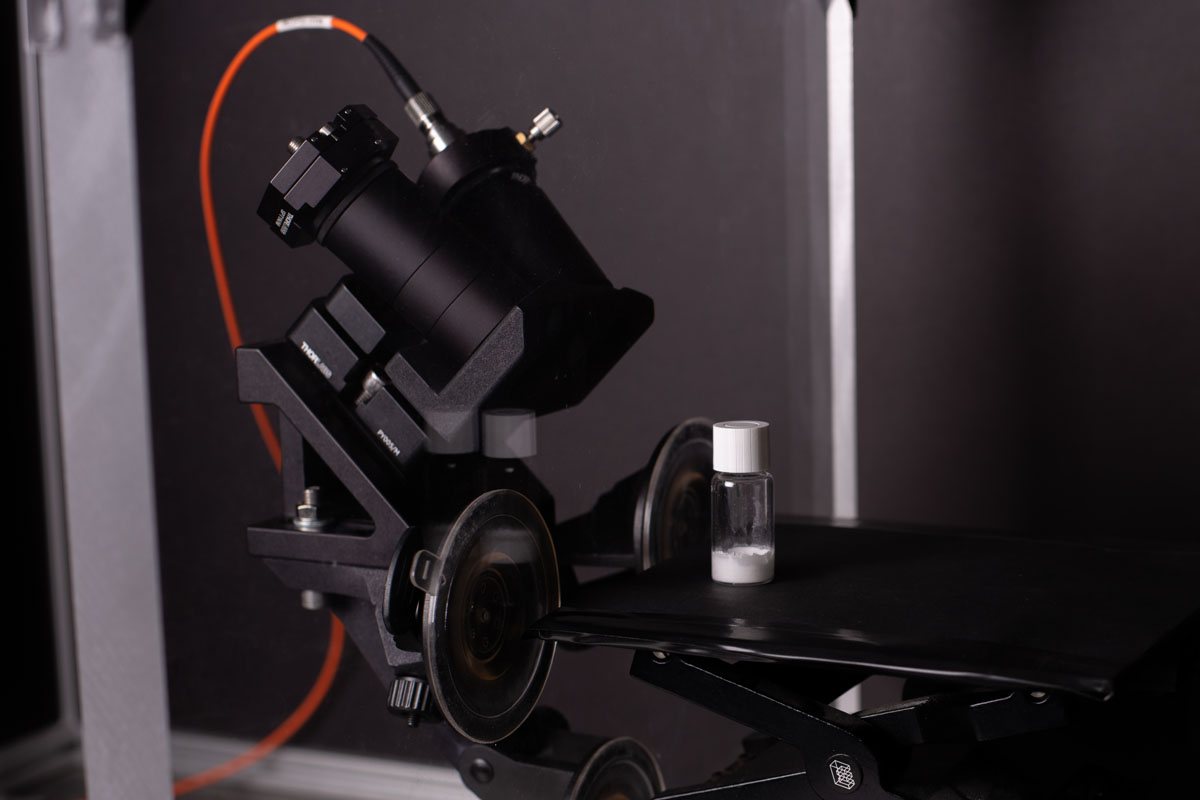
Applications include:
Other than freeze-drying, potential applications include mounting on the outside of fume cupboards for measuring various chemicals, or for mounting on glovebox windows used in the nuclear industry.
(This work was funded by Innovate UK on the ATLASBIO project: Analytical Technologies for the Lyophilization and Stabilization of Biopharmaceuticals – Project 102610)

